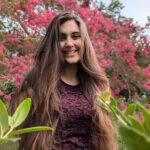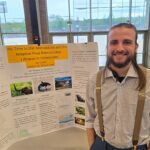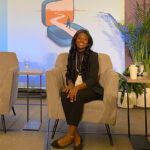
French and art history double major explores how immersive art challenges perceptions
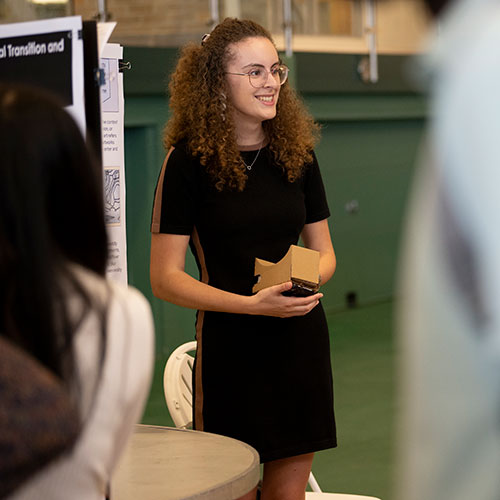
A double major in art history and French & Francophone studies at The College of Wooster, Grace Alexandrowski ’24 found inspiration for her senior Independent Study project while studying abroad. Completing a semester in Paris and summer in Florence, she spent time visiting art exhibits like the Chateau de Versailles, Claude Monet’s Waterlily series as well as more modern exhibits and applied what she’d learned in a class with John Siewert, associate professor of art and art history, about immersive art installations—artworks that viewers can physically enter and move through.
For her I.S. she examined the evolution and impact of immersive installation art and the spectacles they evoke over 800 years of French art history. She completed case studies that compared sites like these to collaborations between contemporary artist Yayoi Kusama and luxury fashion company LVMH (Moët Hennessy Louis Vuitton) and others to illustrate how the different power structures behind them (church and state, individual artists, and commercial powers) influence how audiences interact with immersive installation art.
“When produced well, immersive art is spectacular and draws an audience because it allows for a different kind of tactile and larger-than-life experience,” said Alexandrowski.
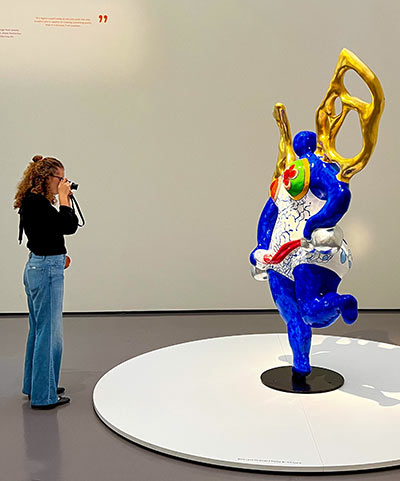
Alexandrowski traveled to Zurich to see a retrospective of Niki de Saint Phalle, one of the artists featured in her I.S.
Taking it one step further, she looked at the commercialization of art as entertainment in modern settings. “Projects like the viral immersive show I saw at the Atelier des Lumières titled Van Gogh, la nuit etoilée reveal a tendency to prioritize surface-level entertainment over more complex artistic meanings,” said Alexandrowski. “Immersive installations engage audiences and provoke thought on art, space, and society at large. My project contributes to ongoing dialogues surrounding the capacity of immersive art to inspire change and challenge perceptions.”
What excites you about your I.S.?
Alexandrowski: My project has shown how artists continually respond to changes in society and technology. As virtual reality and new technologies develop and become more accessible, I am most excited to see how artists will respond with new, spectacular ways to immerse viewers in their visions.
How did Wooster prepare you for designing your project?
Alexandrowski: My coursework in art history and French and my semester and summer abroad in Paris and Florence prepared me well for the I.S. process. It gave me the technical and French language skills to complete the project, and my time abroad gave me most of the inspiration. I first thought of the project in Professor Siewert’s course, Art Since 1960, but it was the visits to the installations referenced in my I.S., as well as those not listed that made me want to continue exploring how and why artists continue to create such spectacular, immersive spaces.
In what ways has your relationship with your I.S. mentor supported you throughout this process?
Alexandrowski: Professor Burch and Professor Siewert were integral as advisors, and I could not have completed the project without their support. With their guidance and feedback, I have become a better researcher and writer. Having two advisors from different academic fields also allowed me to make my project truly interdisciplinary, and I could incorporate theories from each discipline in unique ways.
What has I.S. taught you?
Alexandrowski: I.S. taught me that I am fully capable of completing a long-term, intensive project and doing it well. I.S. can be daunting, but with the support of my advisors and the Wooster community, I hit the ground running and created a project that I am truly proud of.
What are your plans after graduation?
Alexandrowski: After Wooster, I will pursue an MBA in Contemporary Art: Sales, Display, and Collecting from Institut d’études supérieures des arts (IESA Arts & Culture) in Paris. With this degree, I hope to establish a career in the art world and continue sharing my passion for art with those around me.
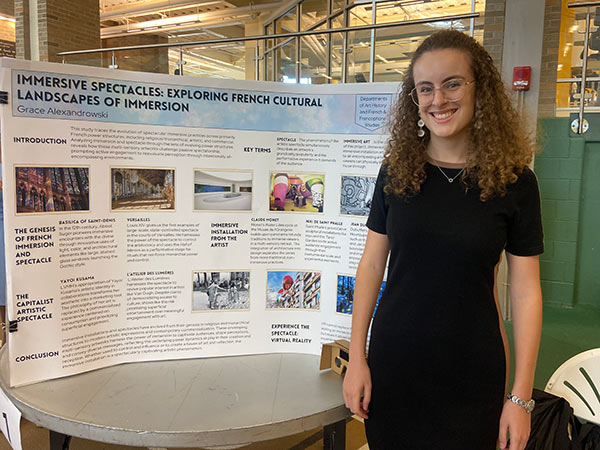
The senior research symposium allowed Alexandrowski to present her research to the community. She created a virtual reality experience to share with guests at symposium to help them understand her research.
Posted in Independent Study on June 12, 2024.
Related Posts
Related Areas of Study
French & Francophone Studies
French language, literature and culture with study abroad and outside-the-classroom immersion opportunites
Major MinorArt - Art History
Explore the cultural and historic significance of art and artists while building research and analytical skills.
Major Minor
